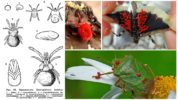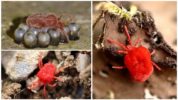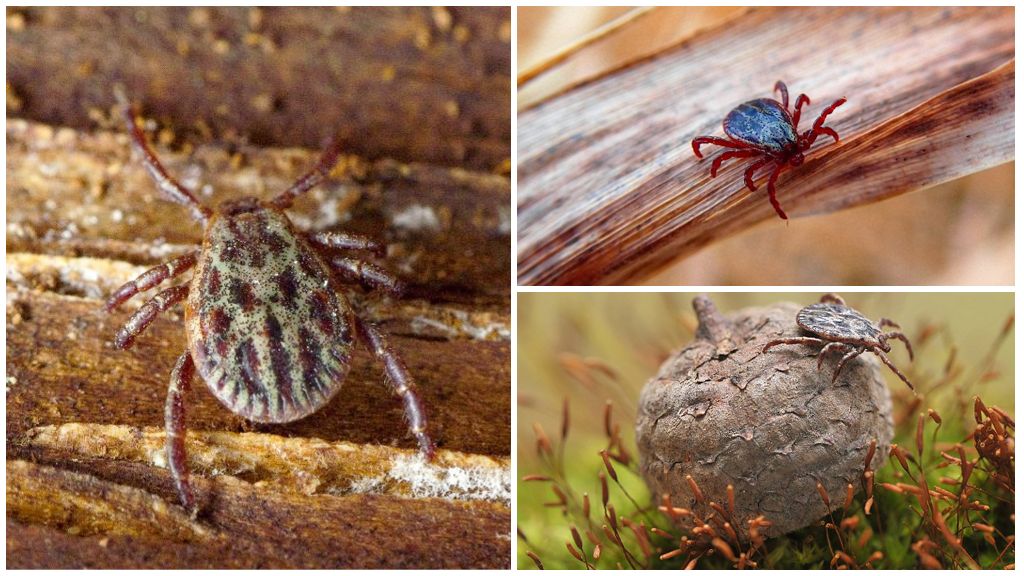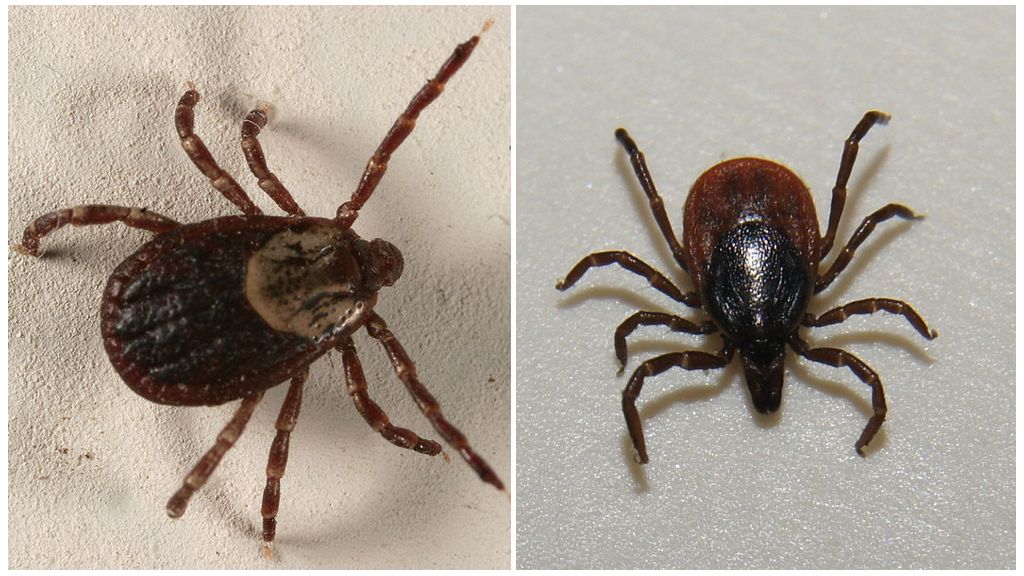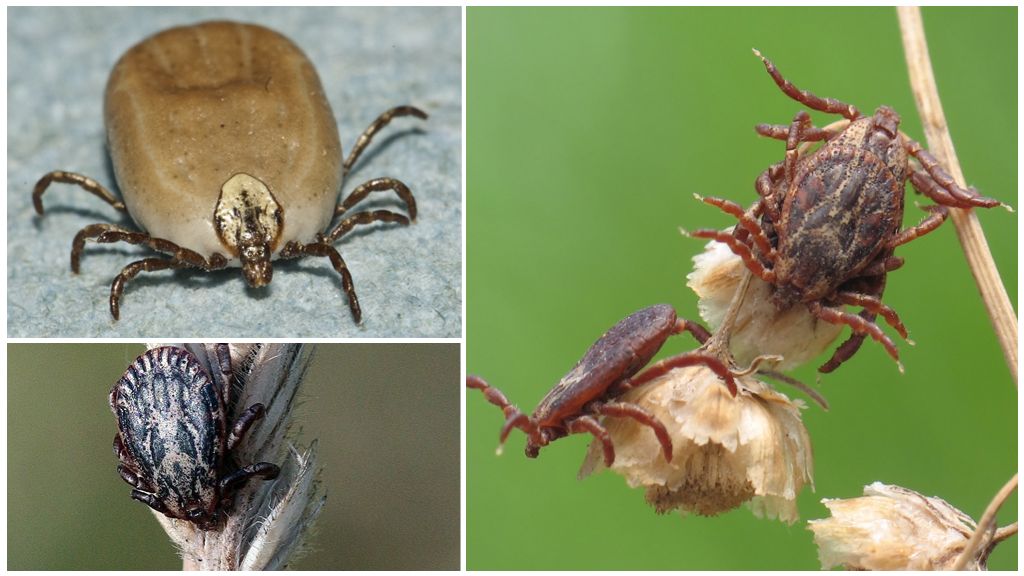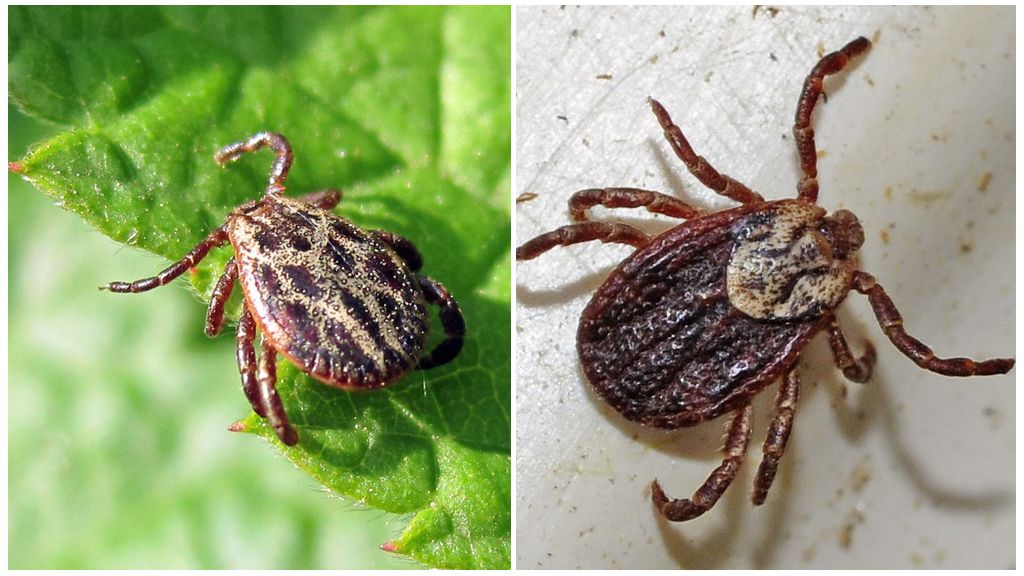- Red beetle tick life cycle
- Mite Red
A red-mite tick, it is also a velvet tick (Latin Trombidiidae) stands out for its bright red-orange color and habitat. In the world there are about 2 thousand species of reds, 100 lives on the territory of Russia. The superfamily consists of 2 large families - Trombidiidae and Trombiculidae. Larvae are parasites, which harm and help humans.
Description of appearance
Red-mite ticks stand out among relatives ticks bright color in red-orange colors. Body size 3-5 mm. Females are always larger. Larvae differ from the adult in size, the number of paws is not 8, but 6. The head is small, the abdomen with convex patterns. The whole body, legs are covered with short, thick villi, which is why the second name appeared - velvet. A photo of a red beetle mite is presented below.
On a note!
Larvae at the initial stage of development are extremely small - 300-800 microns. Size changes slightly when food is absorbed. The chitin cover is stretched, rounded. The color depends on how well fed the tick is. The belly of drunken fresh blood of the red beetle is bright red, crimson, and of the hungry — the abdomen is orange.
Red small ticks are common around the world except Antarctica. Perfectly adapt to adverse weather conditions. The natural habitat is steppes, forests, meadows. Often found in gardens, on vegetable gardens, pastures, personal plots, banks of water bodies. Prefer moist soil.
Life cycle
The velvet tick of the red beetle goes through 7 stages of development:
- egg;
- prelarva;
- larva;
- a nymph of three generations;
- imago.
In our area, over 2 years, 2 generations of beetles appear. In the natural environment, representatives of all stages are present simultaneously. Larvae, second generation nymphs, and adults actively develop. At other stages, the tick goes into a dormant state.
The habitat of the tick anestis is soil. Only larvae leave its limits. Fertilization of females occurs underground, after a few weeks she lays eggs in small heaps. The period of development of the red beetle larvae depends on temperature conditions and humidity. On average 1 week. They are blood-sucking parasites that are not particularly selective in the choice of a host.
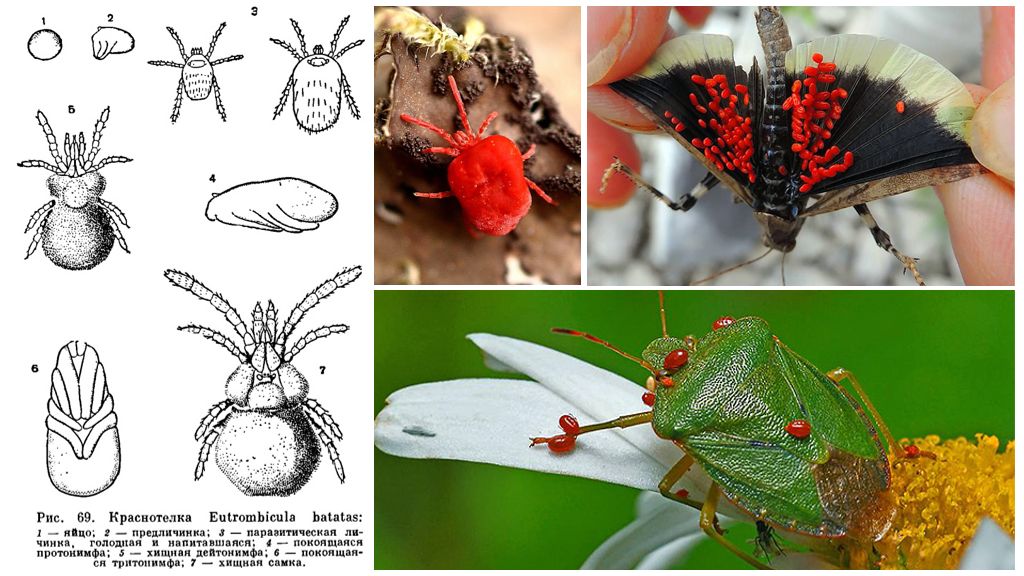
Red small ticks gather on the surface of the soil, await the victim. Insects, spiders, animals can suffer from a parasite invasion. Often victims are lizards, frogs, rats, mice. Reddish calves feed on tissue fluid, blood. The period of stay on the body ranges from 3 days to 1 month. At the end of the term, the parasite falls to the ground, burrows into the soil. There all stages of development pass, it turns into an imago.
The second generation nymph, an adult, is predators that feed on small invertebrates, their larvae.
Interesting!
The red earth mite uses the victim’s body for food, moving over considerable distances. This explains the wide range of the natural habitat of the reds. Arachnids perfectly adapt to adverse conditions, are able to fall into suspended animation for several months, but the hungry larva does not survive the winter.
Power Features
When it falls on the victim’s body, the dwarf quickly finds a favorable place, sticks it. In warm-blooded animals, these are places behind the ear, scruff, nose, eyes, genitals, groin, anus. It is there that active blood circulation, thin skin that can be bitten. Duration of nutrition depends on the variety of redsellers - from 2 hours to several days. A well-fed parasite falls to the ground, continues its development there.
The chelicera nymphs of the second generation of adult red beetles resemble a scalpel with which a predator calmly cuts the integument. The inside of the chelicerae creates a tube through which blood moves. Palps perform the functions of the senses, help to find the best place for food.
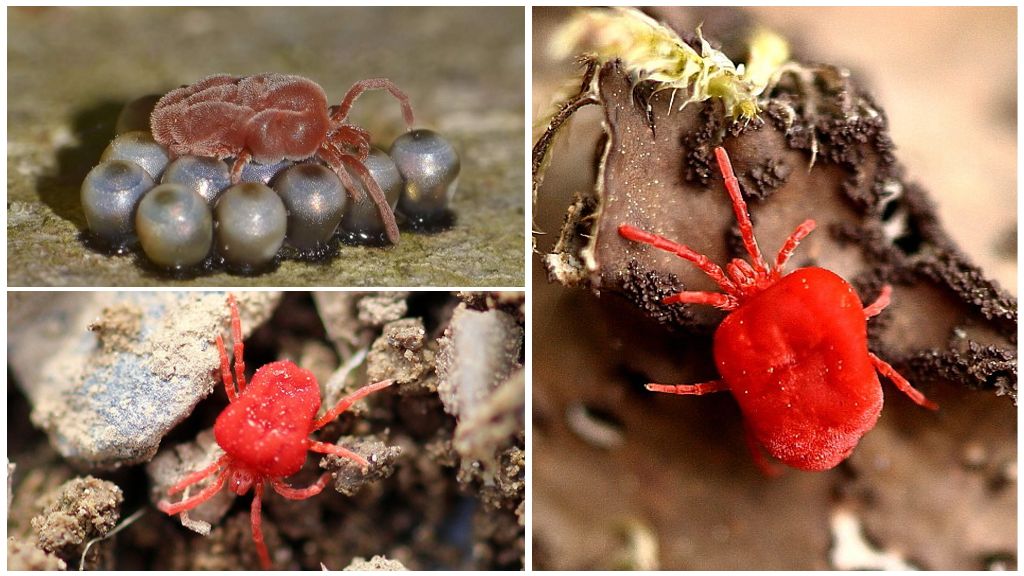
Interesting!
Some species of redshell larvae live in the respiratory tract of birds and animals. For species parasitizing on amphibians, immersion under the skin is characteristic. In most cases, the parasite is introduced partially under the skin of the victim.
Medical value
Red mites in the earth are not dangerous for humans, but larvae that appear on the surface can bite. Small creatures are not selective in choosing a host, and therefore often creep onto the body of people who are in nature.
The beetle sticks in for several minutes, remains on the body for several days, then disappears. The bite moment itself is not felt, but after a while there is a swelling, redness, itching. It is not so easy to notice a velvet tick due to microscopic dimensions. Even in a full state, the body of the larva does not exceed 1 millimeter. The beetles are sucked in the armpits, on the neck in the hair, groin, chest.
The skin is restored in 7 days completely, without causing serious consequences, does not require special therapy. The risk of health risks during a mass attack increases - an allergic reaction appears, numerous eczema.
On a note!
In tropical countries, red beetles spread a dangerous infection - tsutsugamushi. The first symptoms appear after 7-14 days, begin with a general malaise. Lovers of exotic countries should be especially careful. The greatest risk of infection in Asia. Infection carriers are rodents.
The benefits of the reds
In our area, velvet ticks do not belong to pests that must be dealt with in every way. They do not attack plants, do not spoil the crop. Staying in the ground, redshoots destroy a huge number of agricultural, garden pests. In order not to be bitten, you need to observe basic caution - do not walk barefoot on the ground, wear closed clothing in the forest.
On a note!
A red insect, similar to a tick with six pairs of limbs - not a bug, but a larva, a nymph of a red beetle. Another pair of legs appears at the last stage of development. Then the genitals are formed.
